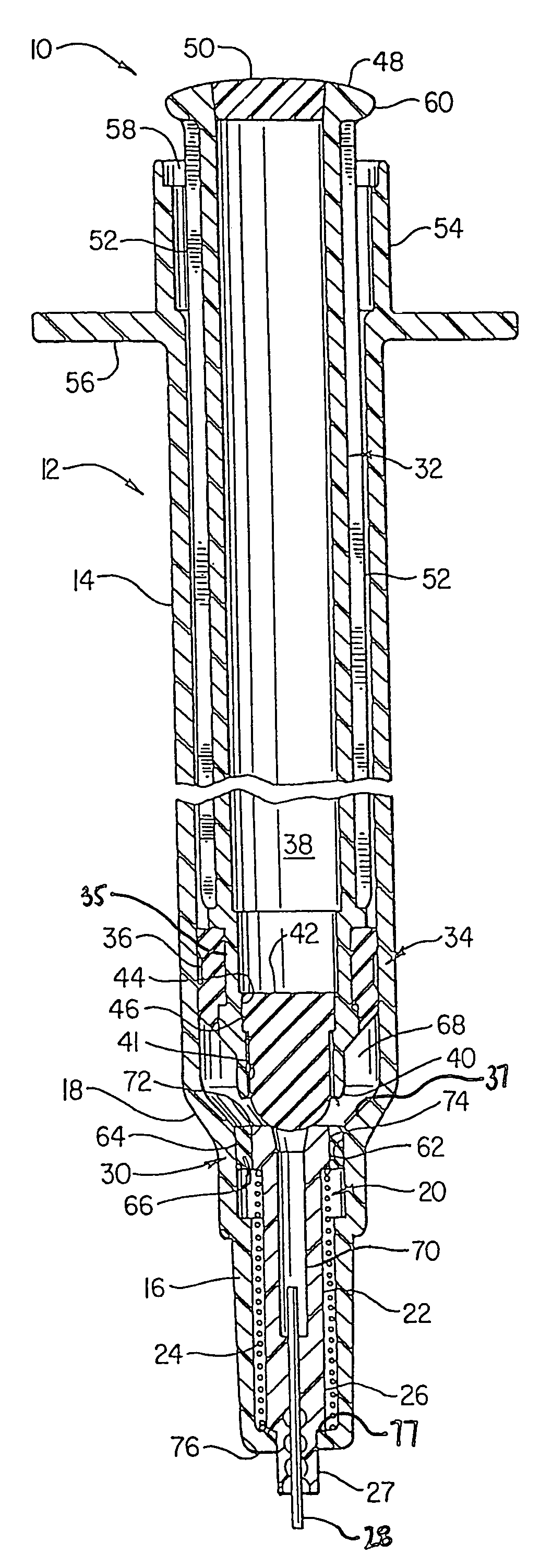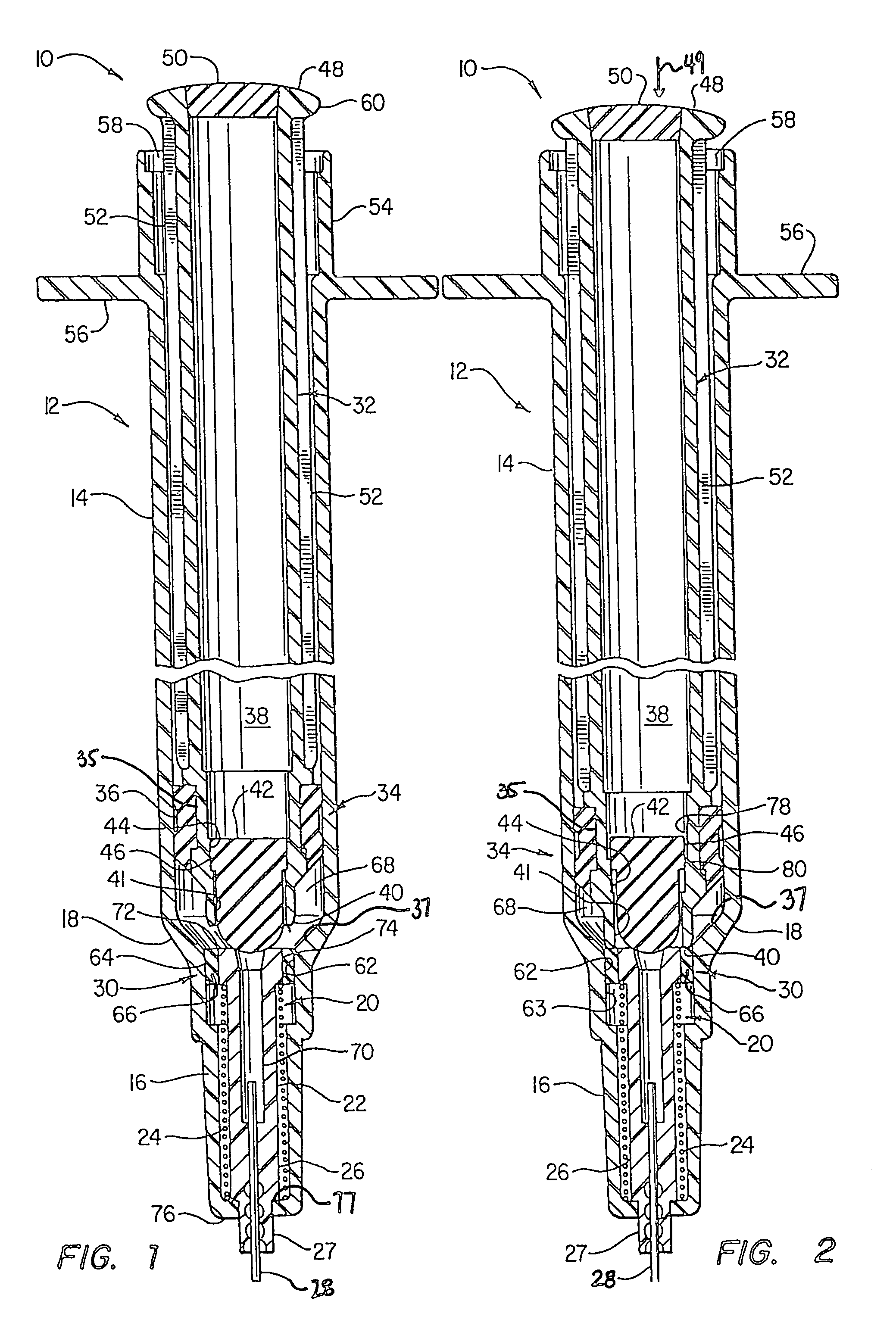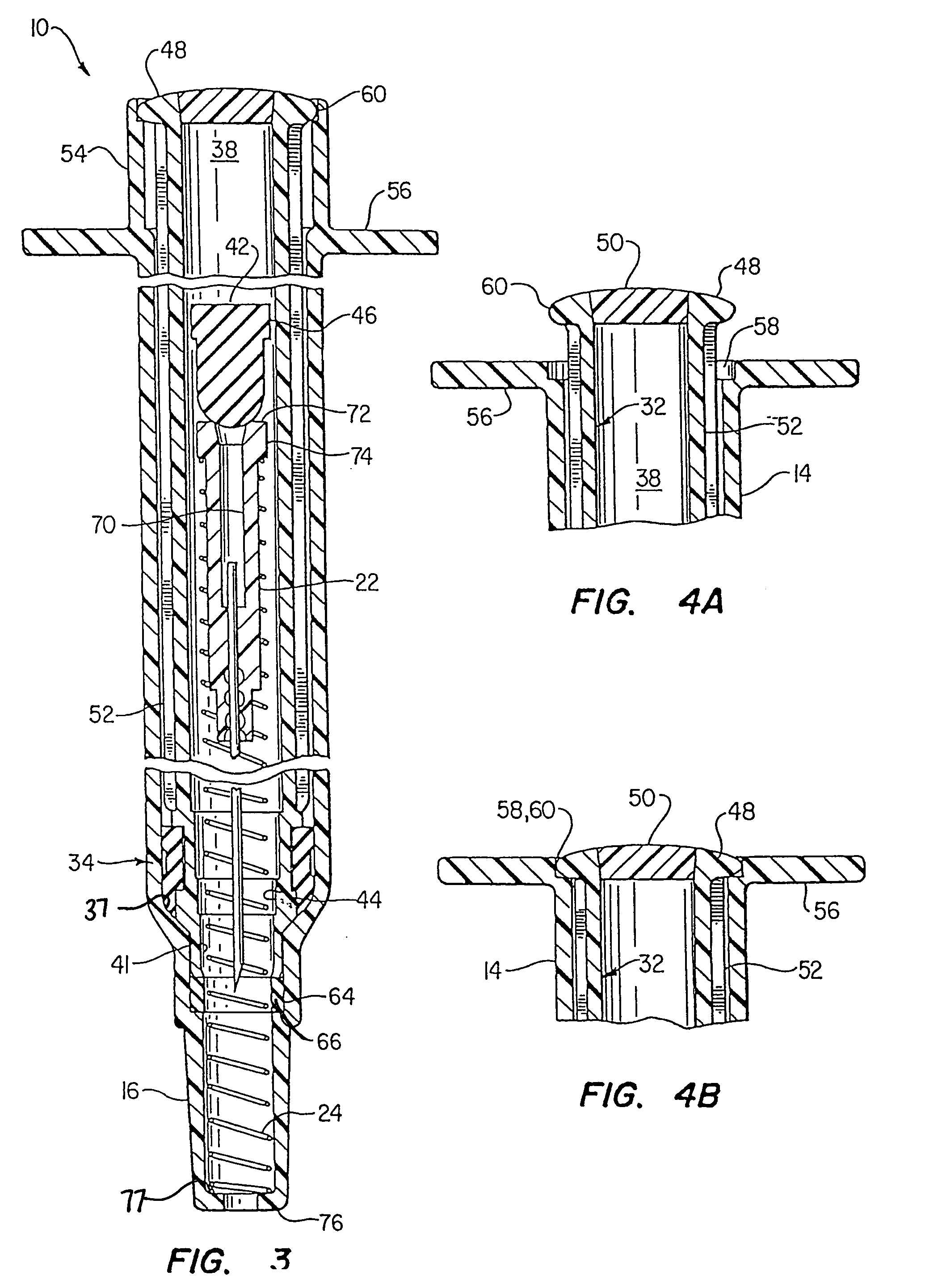Retractable syringe assembly designed for one use
a syringe and assembly technology, applied in the field of medical devices, can solve the problems of syringes with extended needles presenting a risk to medical personnel, sanitation employees and others in the disposal chain, and never reaching the market, so as to prevent tampering after retraction, prevent high blowout pressure, and avoid retraction
- Summary
- Abstract
- Description
- Claims
- Application Information
AI Technical Summary
Benefits of technology
Problems solved by technology
Method used
Image
Examples
Embodiment Construction
[0040]In the description that follows, like parts will be referred to by the same reference numerals. Parts with a subscript letter are mean to illustrate a minor variation of a part with the same number. The drawings are enlarged significantly in order to show the details of the invention but generally reflect the true scale which is contemplated. The parts as shown are understood to be preferably circular and symmetrical as is conventional for syringes. The drawings reflect a syringe structure typically having a 1 cc to 3 cc injection fluid capacity.
[0041]FIG. 1 shows the structure of the first embodiment generally referred to by reference numeral 10. Syringe 10 has a one piece hollow outer body 12. Body 12 has a longitudinally extending wall comprising an elongated barrel 14 and a nose 16 with a transition zone 18 connecting the barrel and nose. A front mounted retraction mechanism lodged in the nose is generally referred to by the reference numeral 20. It comprises the combinati...
PUM
 Login to View More
Login to View More Abstract
Description
Claims
Application Information
 Login to View More
Login to View More - R&D
- Intellectual Property
- Life Sciences
- Materials
- Tech Scout
- Unparalleled Data Quality
- Higher Quality Content
- 60% Fewer Hallucinations
Browse by: Latest US Patents, China's latest patents, Technical Efficacy Thesaurus, Application Domain, Technology Topic, Popular Technical Reports.
© 2025 PatSnap. All rights reserved.Legal|Privacy policy|Modern Slavery Act Transparency Statement|Sitemap|About US| Contact US: help@patsnap.com



